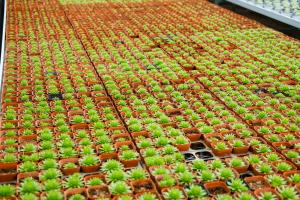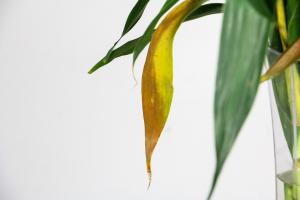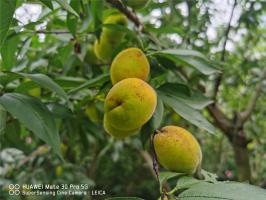Introduction
Tomatoes are a popular and versatile fruit that can be eaten raw, cooked, or preserved. They grow well in many climates, including Zone 6. However, to get a successful crop, it's crucial to plant the seeds at the right time. In this article, we'll discuss the best time to plant tomato seeds in Zone 6 and provide some tips for growing healthy tomato plants.
Understanding Zone 6
Zone 6 covers a large portion of the United States, including parts of the Northeast, Midwest, and West. It's characterized by cold winters and mild summers, with an average annual minimum temperature of -10 to 0 degrees Fahrenheit (-23 to -18 degrees Celsius). Frost usually occurs from early October to early May. When planning to plant tomato seeds, it's essential to keep the climate and weather patterns in mind.
When to Plant Tomato Seeds in Zone 6
The ideal time to plant tomato seeds in Zone 6 is in mid to late April, after the last expected frost date. This timing will give the seeds enough time to germinate and grow into healthy plants before the hot summer weather arrives. You can check the expected frost dates for your specific location on the USDA Plant Hardiness Zone Map. If you miss this planting window, you can still plant tomato seeds in May, but they may not produce as abundant of a crop.
Choosing the Right Tomato Seeds
When selecting tomato seeds to plant in Zone 6, it's essential to choose varieties that are suitable for cooler climates. Look for seeds that are labeled as "determinate" or "semi-determinate," which means that they will mature quickly and produce a relatively compact plant. You can also choose seeds that are labeled as "early season" or "cold-tolerant." These varieties are more likely to thrive in colder temperatures and shorter growing seasons.
Preparing the Soil
Before planting your tomato seeds, it's crucial to prepare the soil properly. Tomato plants thrive in well-draining soil that's rich in organic matter. If your soil is heavy or compacted, you may need to amend it with compost or other organic matter to improve its structure. You should also test the soil's pH level to ensure that it's within the optimal range of 6.0 to 6.8 for tomato plants.
Planting Tomato Seeds
To plant your tomato seeds, start by filling a seed tray with potting soil. Moisten the soil, then sprinkle the seeds on top, spacing them out evenly. Cover the seeds with a thin layer of soil, then water them gently. Place the seed tray in a warm, sunny location and keep the soil moist but not waterlogged. After the seeds germinate, thin them out if necessary, leaving only the strongest seedling in each cell or pot.
Caring for Tomato Plants
As your tomato plants grow, it's essential to provide them with proper care. Water them regularly, but don't let the soil become waterlogged. Fertilize them every two to four weeks with a balanced fertilizer that contains equal amounts of nitrogen, phosphorus, and potassium. Stake or cage the plants as they grow, and prune off any suckers that develop between the main stem and the branches.
Harvesting Tomatoes
Tomatoes usually mature in 60 to 80 days after planting, depending on the variety. When the tomatoes turn red and feel slightly soft to the touch, they are ready to harvest. Gently twist or cut the tomatoes from the plant, being careful not to damage the stem or fruit. Store the tomatoes at room temperature until they are fully ripe, then refrigerate them to extend their shelf life.
Conclusion
Planting tomato seeds in Zone 6 can be a rewarding experience with a little preparation and care. By selecting the right varieties, preparing the soil, planting at the right time, and providing proper care, you can enjoy a bountiful harvest of fresh, delicious tomatoes all summer long.

 how many times do yo...
how many times do yo... how many planted tre...
how many planted tre... how many pine trees ...
how many pine trees ... how many pecan trees...
how many pecan trees... how many plants comp...
how many plants comp... how many plants can ...
how many plants can ... how many plants and ...
how many plants and ... how many pepper plan...
how many pepper plan...






























